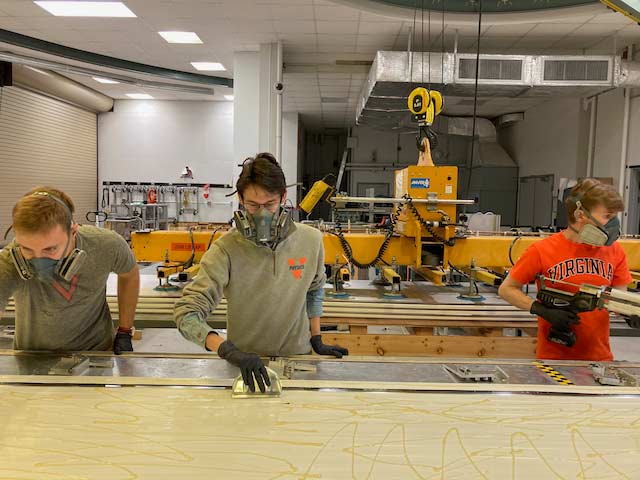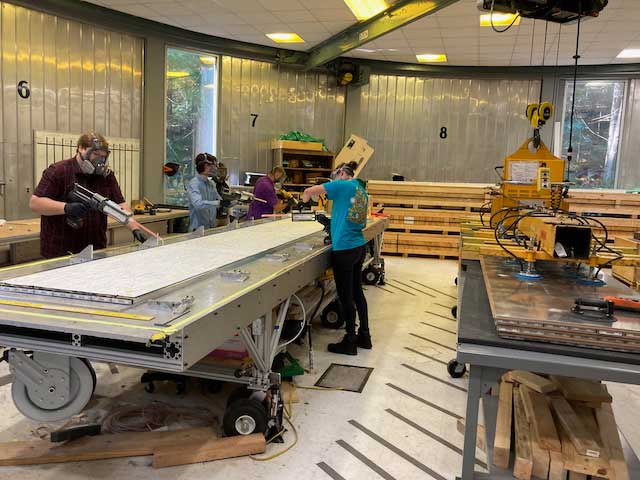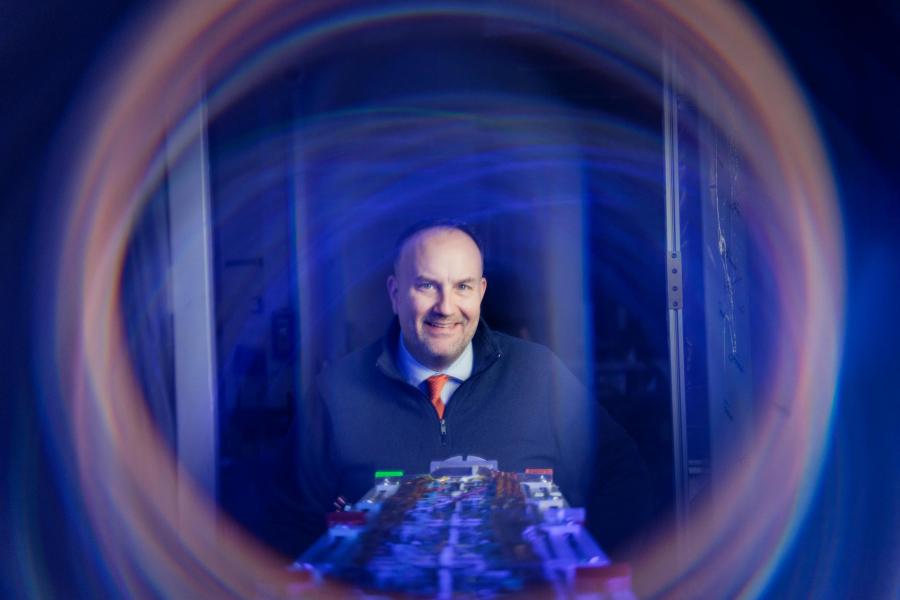University of Virginia physicists and the research organization Fermilab are assembling the final pieces of a “cosmic ray veto detector,” which will help them spy on subatomic particles called muons as they decay into electrons.
It may sound like science fiction, but it’s not. It’s all science. And human beings may end up better understanding the universe as a result.
UVA shipped its last truckload of five large, specialized panels March 1, bound for the Chicago-area research facility. Formally known as the Fermi National Accelerator Laboratory, the lab is run by the U.S. Department of Energy.
The panels that comprise the detector will form the shell of the high-profile international experiment, called “Mu2e” – so named for the muon-to-electron conversion scientists hope to record.
“In just a few years, Mu2e could provide a major discovery for physicists,” said Craig Group, an associate professor in the Department of Physics' Experimental High Energy Physics unit. “UVA takes great pride in being responsible for a major piece of the experiment.”







